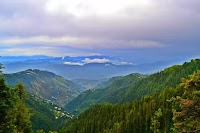Located at a distance of 30 km from the Sibbi and 120 km from the Quetta city it is one of the earliest sites with evidence of agriculture including the farming of barley, einkorn, emmer wheat, jujubes and dates. They also used to herd, sheep, goats and cattle. The later resident also put effort into craft, including flint knapping, tanning, bead production and metal working.
The site was discovered in 1974 by an archaeological team directed by French archaeologists Jean-François Jarrige and Catherine Jarrige, and was excavated continuously between 1974 and 1986, and again from 1997 to 2000. The earliest settlement at Mehrgarh, in the northeast corner of the 495-acre (2.00 km2) site, was a small farming village that has been dated to between 7000 BCE to 5500 BCE. The whole area covers a number of successive settlements. Archaeological material has been found in six mounds, and about 32,000 artifacts have been collected.
Early Mehrgarh residents lived in mud brick houses, stored their grain in granaries, fashioned tools with local copper ore, and lined their large basket containers with bitumenThe people were also master in pottery and they had introduced potter's wheel. They also had contact with contemporaneous cultures in northern Afghanistan, north eastern Iran and southern Central Asia.



